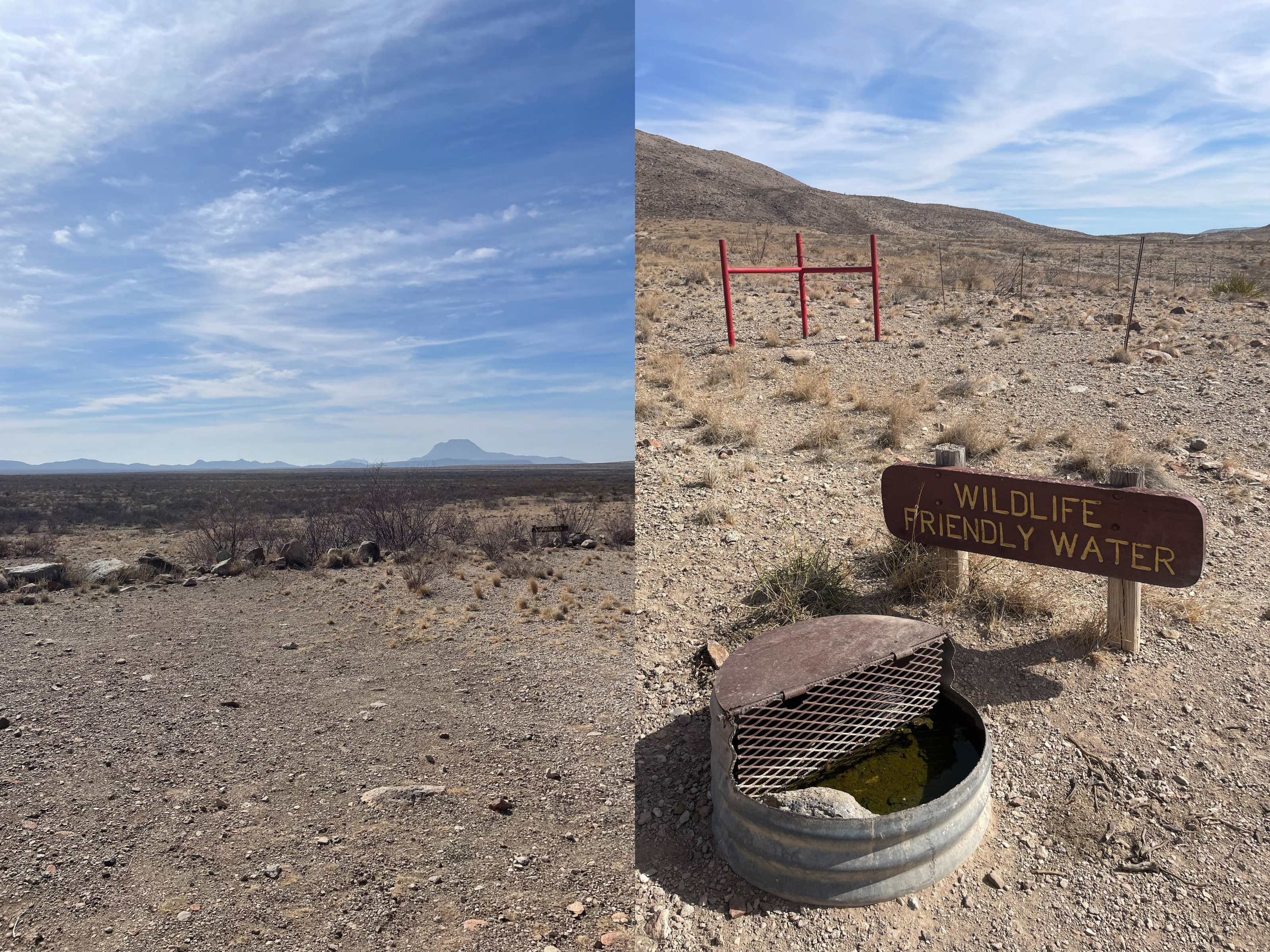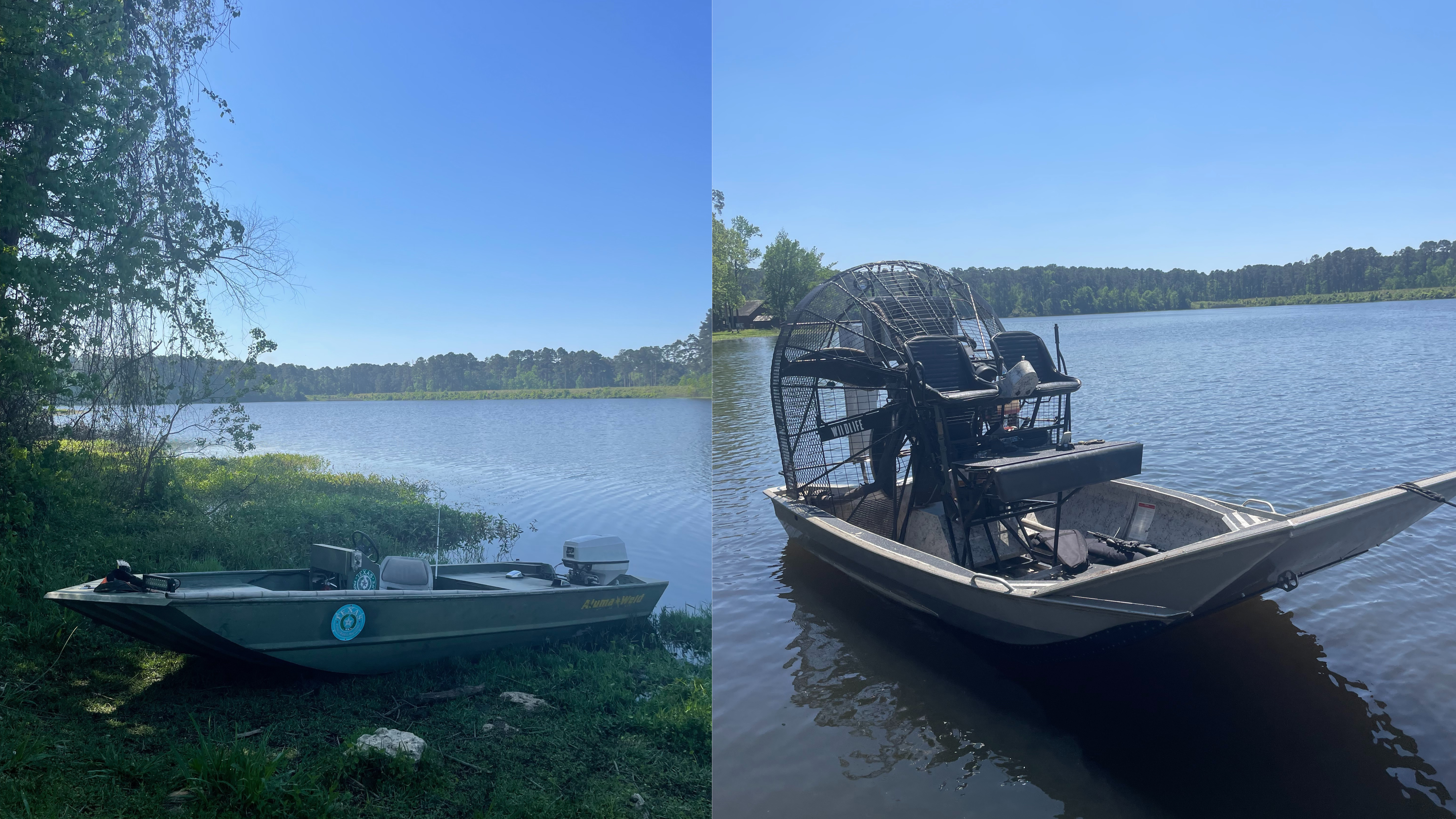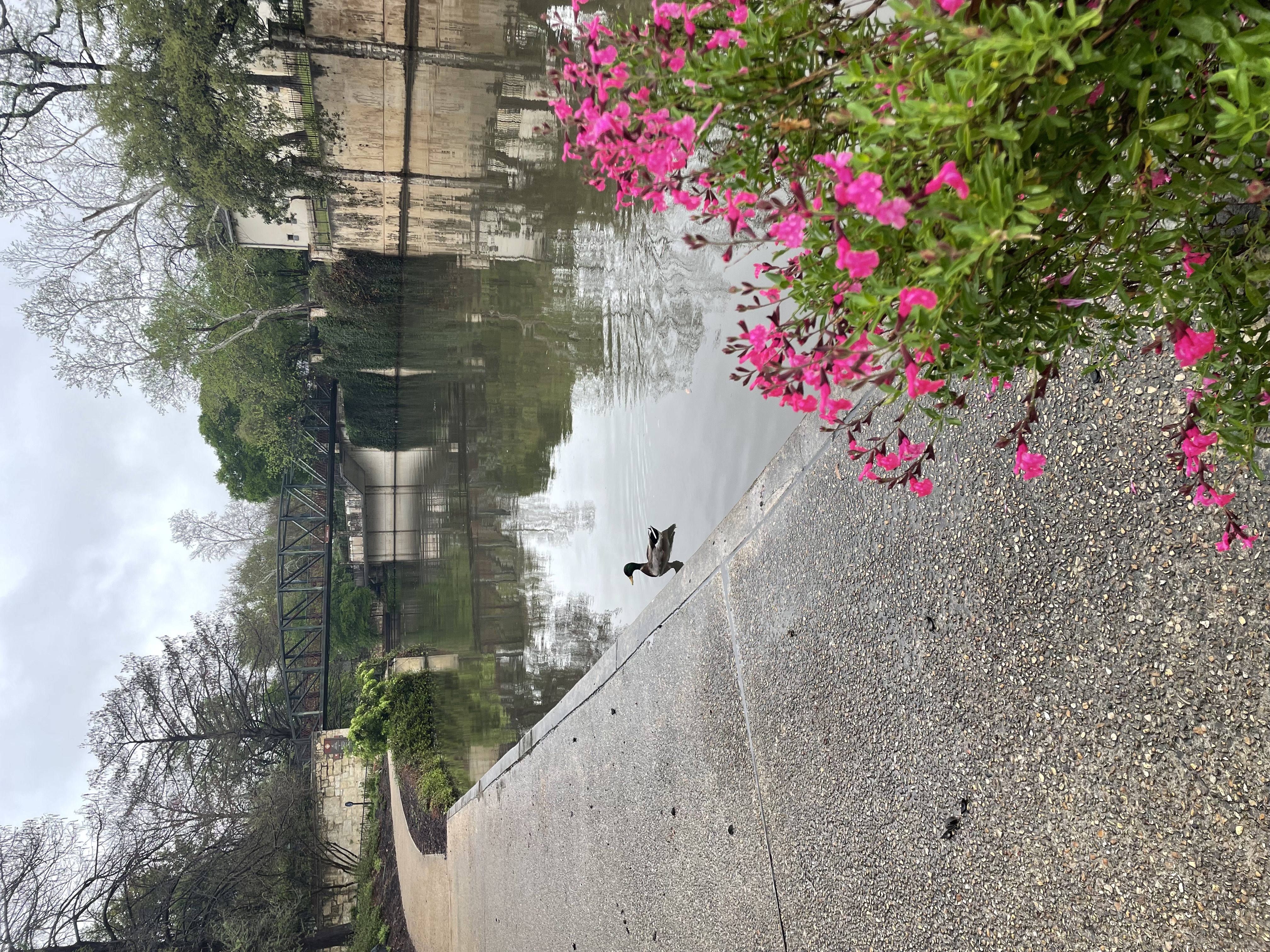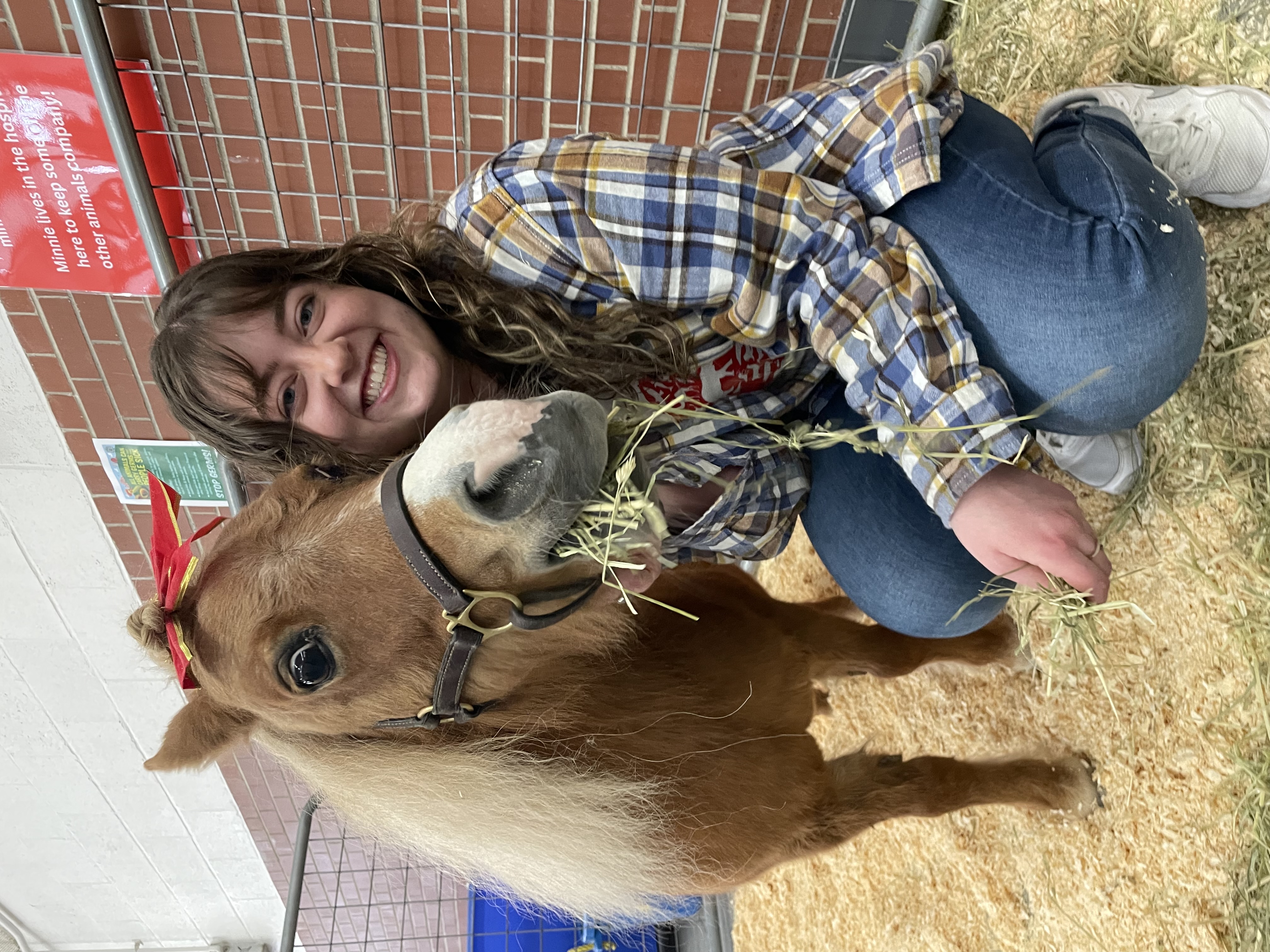Veterinary Conservation in Action: Experiential Learning With the Texas Parks and Wildlife Department
By Anna Schultz, DVM ‘26
Veterinary medicine offers a wide range of career paths and options, and one of the most interesting and often overlooked is that of a state wildlife veterinarian.
This spring, I had the amazing opportunity to work alongside two state wildlife veterinarians at the Texas Parks and Wildlife Department (TPWD). TPWD is a state government agency that oversees and manages Texas’s state parks and protected lands. This includes state parks, wildlife management areas (WMAs), state natural areas, trailways, and historic parks, along with the animals that inhabit these areas.
During my four-week externship, I gained an incredible variety of experiences and learned so much more than I ever expected in that short time. As the saying goes, everything is bigger in Texas—including the range of wildlife.
Lessons in Population Management
I worked primarily with J. Hunter Reed, MPH, DVM ‘20, TPWD's senior wildlife veterinarian. He is based in San Antonio, but we traveled the entire length of the very large state during my time there. I started my visit by flying into El Paso, on the western side of Texas. There, in the Chinati and Quitman mountains, TPWD was undertaking a project to capture and collar aoudad and mule deer.
Aoudad are a species of exotic sheep, originally from northern Africa, that were introduced to the United States. They have thrived in the hot dry lands of western Texas and now outcompete the native bighorn sheep for habitat.
Aoudad are also unfortunately carriers of Mycoplasma ovipneumoniae, a bacterium that causes severe epizootic bighorn sheep pneumonia. While aoudad are hardy animals and often survive the disease themselves, they transmit it to native bighorns, which are more affected by the pneumonia and succumb to the disease with alarmingly high mortality rates. Due to both habitat competition and disease transmission, aoudad have become a major threat to Texas’s native desert bighorn sheep populations.
TPWD is leading a multi-year project to regulate the aoudad population and re-establish bighorn sheep in disease-free areas of the state. This process involves helicopters, net-guns, sedation, telemetry collars, and collaboration among many experienced and knowledgeable wildlife experts. I learned so much about native wildlife conservation and the vital role of active population management.
Alligators in East Texas
Over on the opposite end of the state, Texas has alligators. I had no idea alligators even lived in Texas, but the easternmost part of the state is a completely different habitat from the barren desert land of the west. I traveled with Dr. Sara Wyckoff, a TPWD wildlife veterinarian based in Austin, all the way to Huntsville State Park. There, we worked at a gorgeous lake in the lush green forest alongside incredible alligator experts and park rangers.
A growing population of alligators in the park has become a safety risk—especially since campers and visitors often try to enter the water and swim. As powerful predators, alligators pose a serious danger to people. Population management isn’t the first thing most people associate with wildlife conservation, but to manage population growth, the largest and oldest alligators were selectively hunted. As conservationists, we ensured that such animals were used for veterinary and ecological research. For example, I learned how to safely surgically implant intra-coelomic trackers and about methods for obtaining heart rates and internal body temperatures on the animals that were euthanized. So much is still unknown about how alligators survive through variable extreme temperatures, and this project is providing important information about this species that can help us better understand their health and role in the ecosystem. The alligator meat from the animals that were culled was also donated to a food shelter.
Hunting as a Conservation Tool
Hunting is a polarizing and controversial practice, with people holding strong opinions on both sides. Whether you are a hunter or not, it is important to understand how hunting can be used as a conservation tool. A significant portion of my time in Texas was spent learning about the hunting industry and how it can be used to benefit conservation. Controlled hunting helps manage wildlife populations, allowing other species to survive and thrive and helping to maintain ecosystem balance.
Another way hunting is useful is for generating revenue. The Pittman-Robertson Act, established in 1937, puts a tax on ammunition, firearms, and archery equipment. This revenue is then directed to state wildlife agencies to support conservation efforts. Wildlife agencies like TPWD use this funding for habitat restoration, wildlife management programs and research, and hunter education.
There is a very high demand for white-tailed deer hunting and breeding in Texas. Deer breeder facilities must meet requirements regarding fence height, enclosure spacing, and health monitoring and disease control, particularly in regards to chronic wasting disease (CWD). CWD is a deadly disease caused by a highly infectious prion that results in behavioral changes, significant weight loss, and neurological issues such as incoordination. Unfortunately, these signs may not appear until 24 months after infection, so the affected deer may have already spread the disease within the herd. There is currently no cure for CWD, and entire enclosures—or even whole facilities of animals—may need to be depopulated to contain outbreaks.
CWD is a major concern for TPWD, since cervids in human care are still considered wildlife. Despite regulations on deer releases, there remains a risk of disease transmission between wild deer and captive deer. Much of my time with TPWD was spent learning about the intricacies of CWD control and the importance of having clear methods for tracking and reporting diseased animals.
I cannot fit everything I learned from my time with TPWD into one short blog post. In addition to what I’ve already shared, I experienced so much more. I learned about important wildlife-related problems on TPWD’s radar, including New World screwworm, cattle fever ticks, highly pathogenic avian influenza, and, as previously mentioned, epizootic bighorn sheep pneumonia and CWD. I gained experience with methods of wildlife anesthesia and immobilization in various settings, from the wide-open deserts of West Texas to densely populated cities and suburbs. I also learned what it takes to be involved in legislation, and about the importance of having knowledgeable veterinarians who can speak to the biomedical implications of proposed bills and laws. Most importantly, I learned that state wildlife veterinarians are often underrecognized but play an essential role in protecting the health of our environment and the animals that call it home.
This opportunity was supported by the Cornell Yang Center for Wildlife Health Student Support Fund.
Anna Schultz, Class of 2026, is a fourth-year DVM student at Cornell University College of Veterinary Medicine. She earned her bachelor’s degree from Rockhurst University, majoring in organismal biology and philosophy with a concentration in bioethics. She aspires to work in One Health and conservation medicine, focusing her veterinary career on protecting threatened species and collaborating with local communities to develop sustainable solutions for conserving natural ecosystems.
All photos provided by Anna Schultz.
Please consider giving to the Cornell Yang Center for Wildlife Health Student Support Fund to help provide more hands-on experiential learning opportunities for students passionate about wildlife health and conservation.







